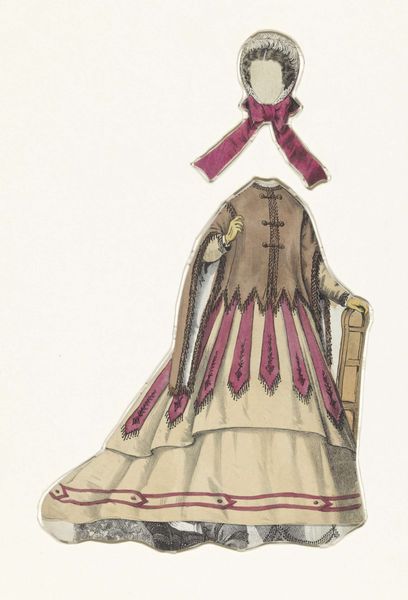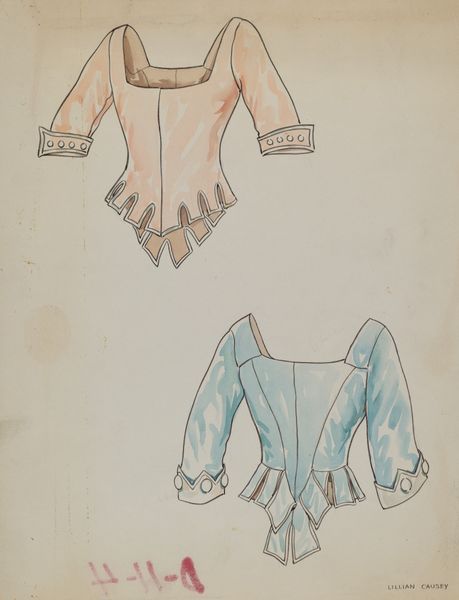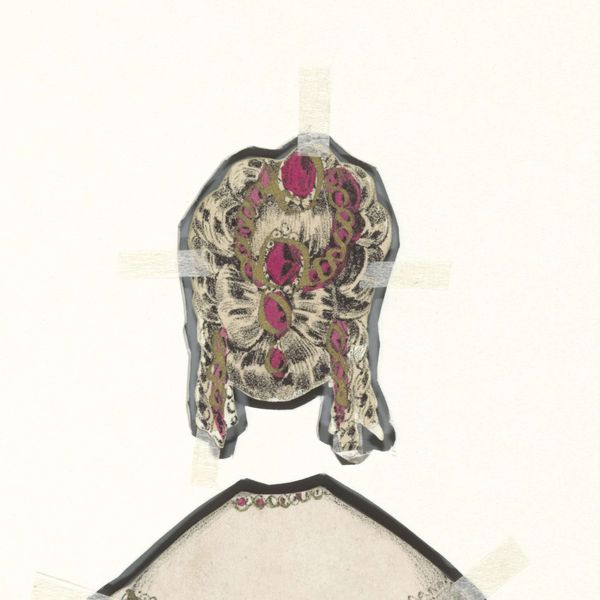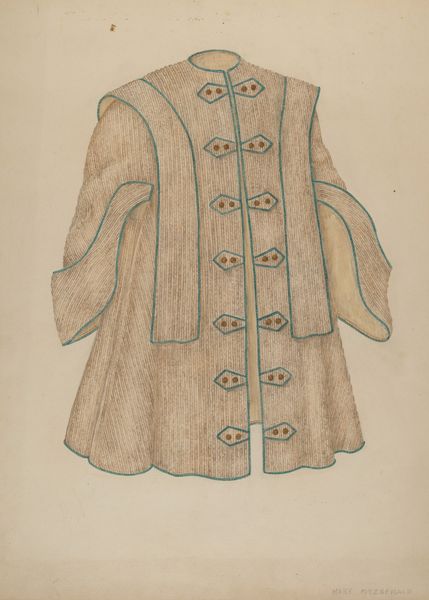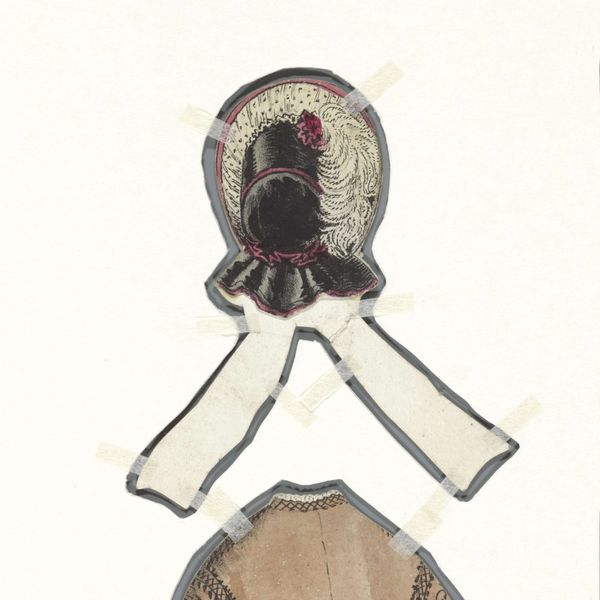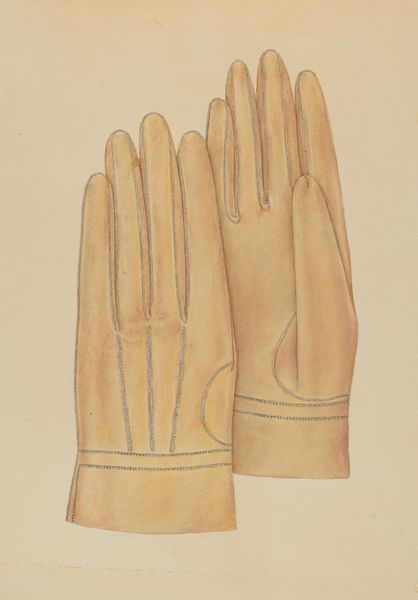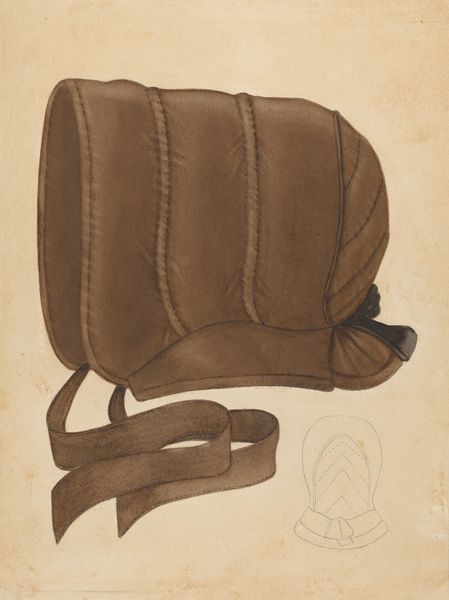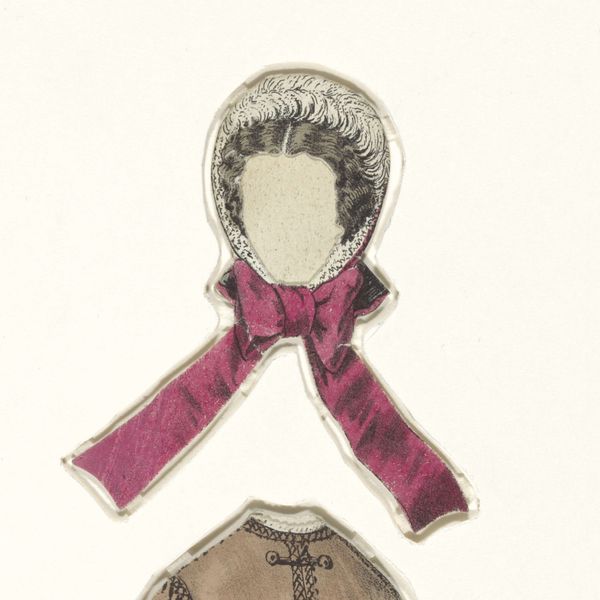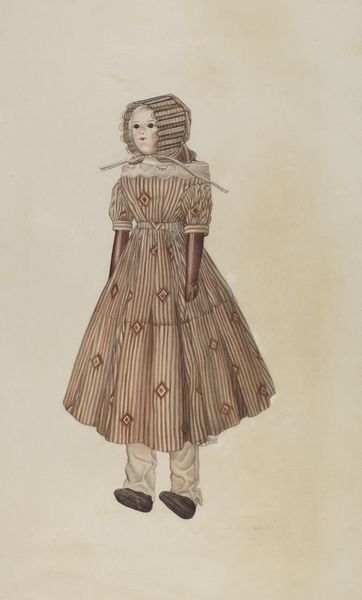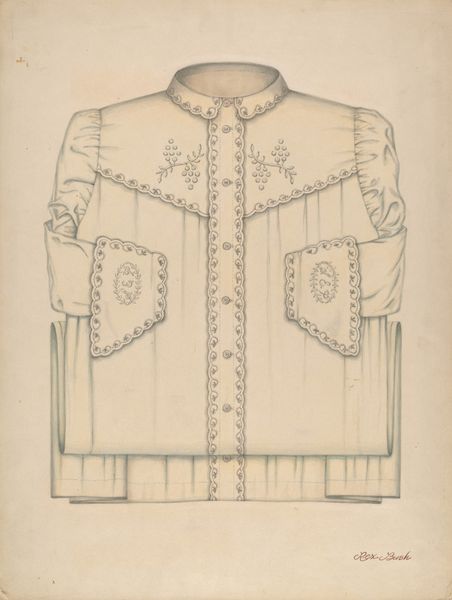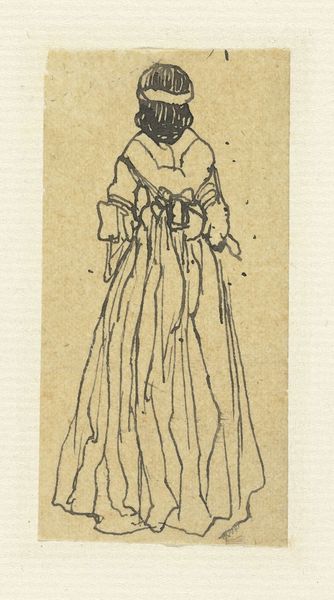
drawing, paper, ink
#
portrait
#
drawing
#
paper
#
ink
#
romanticism
#
fashion sketch
Dimensions: height 178 mm, width 155 mm
Copyright: Rijks Museum: Open Domain
Curator: This ink drawing on paper, created anonymously between 1825 and 1875, is titled "Achterzijde van een jurk voor een uitknippop"—which translates to "Back of a Dress for a Paper Doll." Editor: It's fascinating how the artist captures the textures of the fabric and trim with just ink. The precision is captivating. Look at the interplay of the mauve stripes against the beige—almost cream. There is a soft formality to it, despite its medium and intent. Curator: Absolutely, and it's also an artifact reflecting the domestic lives of women and children during that era. The detail is significant because fashion wasn't just about aesthetics. Clothing, especially for women, signaled social status, economic means, and even political leanings. To have a paper doll with such intricately rendered outfits speaks volumes about aspirations. Editor: The choice of color also dictates the eye's flow around the drawing; what do you make of it? How do these colors and shapes interact? Is there symbolism inherent to the arrangement of elements on the drawing? I'm drawn in by the structural integrity of the drawing despite the limited palette and playful quality of the subject. Curator: Well, I see these shades—mauve and cream—and imagine the implications for the historical development of feminine ideals and aspirations for that class. It suggests something deeper about identity construction and the material culture surrounding young women. Was this fashion sketch more about social control than childhood whimsy? Editor: I agree, to some extent, though I hesitate to ascribe pure constraint, I observe how it merges the tactile quality with the flatness of paper to invite questions about dimensionality and imitation within the context of art-making. Curator: Right. By viewing it as both a fashion sketch and as an aspect of material culture that perpetuates certain societal views, we extract deeper meanings from it. I think it is a valuable point about material culture. Editor: This exercise truly reveals how formalism can be effectively incorporated into broader discussions about artistic and cultural expression, though perhaps not fully appreciated by the casual viewer.
Comments
No comments
Be the first to comment and join the conversation on the ultimate creative platform.
